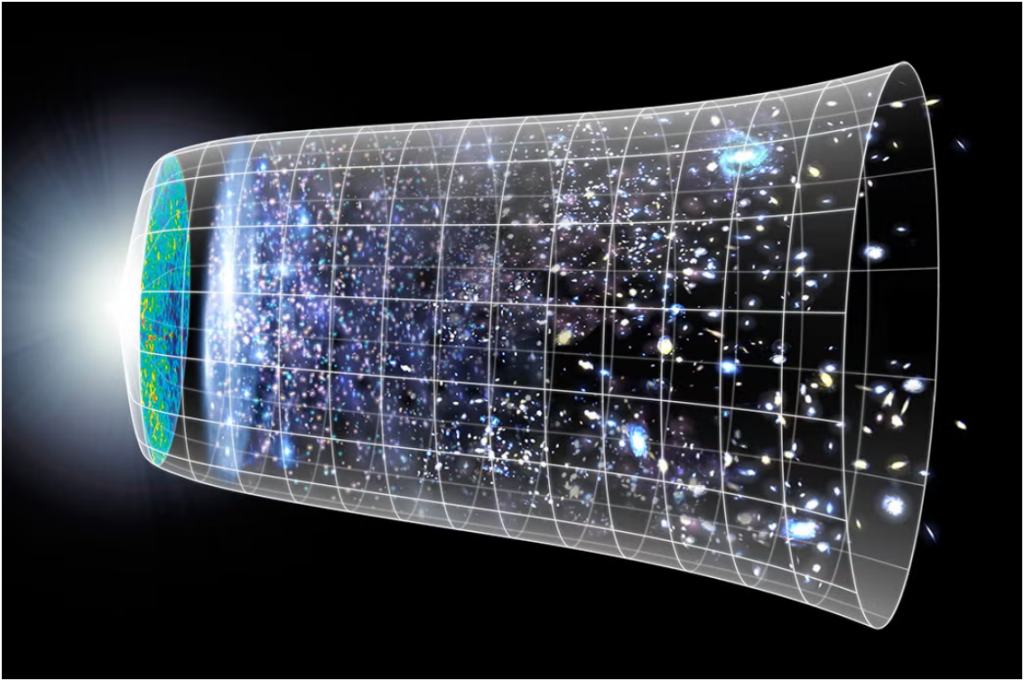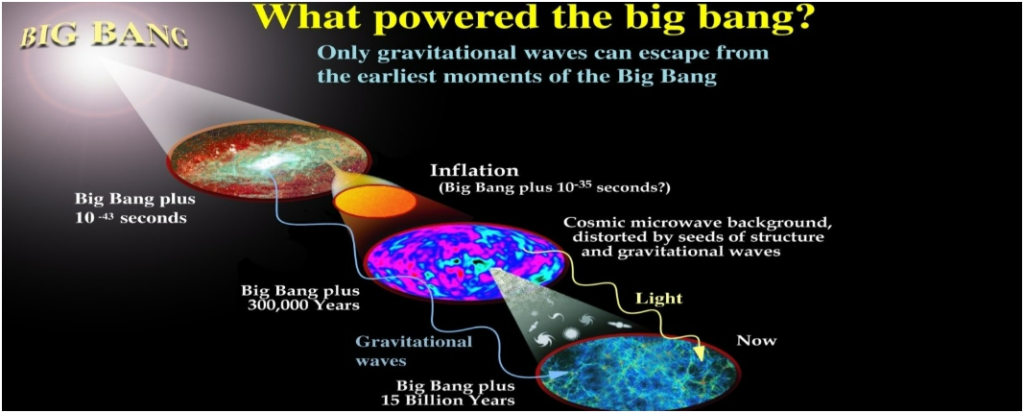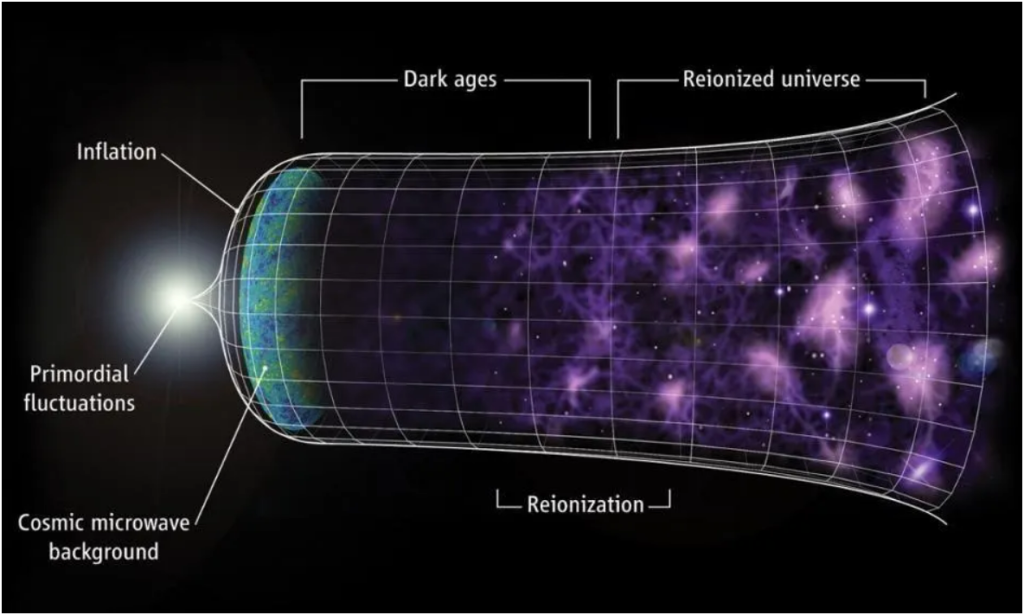Quantum Egg – When Edwin Hubble in 1929 showed that galaxies were moving away from each other, he set the stage for a new era of cosmology. In this era, cosmologists understood the Universe to have a history—and indeed a beginning, far back in the past. That conclusion followed naturally from Hubble’s discovery: If galaxies are now moving apart (we say they are receding), perhaps there is a point in the cosmic past when they were, loosely speaking, “on top of each other,” where all matter was squeezed into a tiny volume. Pushed to its extreme, this volume becomes as small as anything the laws of physics can conceive. Of course, it is also reasonable to believe there are laws at that extreme level that we do not yet know.
Mysteries of Big Bang and the Laws of Physics

In 1929, Edwin Hubble’s discovery that galaxies were moving away from each other opened up a new era of cosmology, where scientists began to understand the Universe as having a history and a beginning. Hubble’s observation suggested that there might have been a time in the past when all matter in the Universe was squeezed into an incredibly small volume. This idea gave birth to the Big Bang model of cosmology, which has been tremendously successful in describing the early Universe. However, this also raises the question of what laws of physics governed the extreme conditions at the beginning of the Universe, which we may not yet fully understand. Check out my 7th article in the series on modern cosmology, “The Quantum Egg that Birthed the Universe, If the world had begun with a single quantum, the notions of space and time would altogether fail to have any meaning at the beginning; they would only have a sensible meaning when the original quantum had been divided into a sufficient number of quanta.
Quantum Egg Genesis and Lemaître’s Vision of a Singular Atom
In Lemaître’s description, then, the initial state of the Universe was without space or time. Lemaître suggests that perhaps this initial quantum was like a “unique atom.” The highly unstable atom “would divide into smaller and smaller atoms by a kind of super-radioactive process. Some remnant of this process might… foster the heat of the stars until our low atomic number atoms allowed life to be possible.” He concludes the very short article with a spectacular insight: “The whole matter of the world must have been present at the beginning, but the story it has to tell may be written step by step.”

In 1931, Georges Lemaître, a Belgian priest and cosmologist, proposed a revolutionary idea in an article—that the beginning of the Universe could be explained as the decay of a single quantum of matter. According to Lemaître, the initial event of the Universe lacked space and time as we know it since these concepts would only make sense after the original quantum had been divided into smaller quanta. He likened the initial quantum to a “unique atom” that would break down through a “super-radioactive process” into smaller atoms, ultimately giving rise to the heat of stars and the conditions necessary for life.
Lemaître’s thesis can be summarized as follows: The beginning of the Universe was in an initial state that was beyond the conventional understanding of space and time. It can be imagined as a timeless quantum atom that began to spontaneously decay into smaller atoms or quantum fragments, generating some heat or radiation during the process. As the atom decays, time starts to pass, and space expands as the fragments move away from the original atom. The decay process continues through many stages until the matter eventually organizes into the familiar atoms, ultimately leading to the emergence of life on Earth.
Post-War, Early Universe through Nuclear Physics
During the Second World War, scientists were occupied with national defense and weapon design, and research on the early history of the Universe was put on hold. However, after the war, scientists started applying new knowledge gained from nuclear physics, which was used to make bombs, to the study of stars’ nuclear furnaces. By the late 1940s, they began using this knowledge to reconstruct the early history of the Universe. One of the main challenges was determining how far back in time they could reach and how they could trace the evolution of the Universe from its initial state to its current state. This challenge remains a fundamental problem for the Big Bang model of cosmology.

In the mid-1930s, Hideki Yukawa proposed the existence of the strong nuclear force, which was previously unknown, to explain how atomic nuclei are held together. This force must be strong enough to overcome the electric repulsion of positively charged protons within the nucleus of an atom. It was also understood at the time that bonds between objects break at high energies, and that at even higher energies, atoms can break into smaller parts. As energy levels continue to rise, electrons separate from the nucleus, and eventually even the nucleus itself breaks apart. As the intensity of collisions between bits of matter and radiation increases, the forces that bind matter together can be successively overcome.
Quantum Egg – The concept of sequential breaking was applied to the Universe’s history, which began in an idealized quantum state before transforming into familiar matter like atomic nuclei and atoms. The Big Bang model emerged from the work of George Gamow, Ralph Alpher, and Robert Herman in the late 1940s and early 1950s, and it is based on a few core ideas. The early Universe was hotter and denser, resulting in the breakdown of matter into smaller components. As the Universe expanded and cooled over time, more complex structures formed, such as stars, galaxies, planets, and black holes, eventually leading to the emergence of life. It is remarkable that al l of this came into being from an uncertain beginning.

